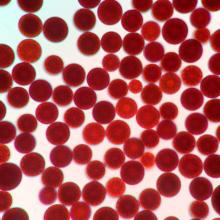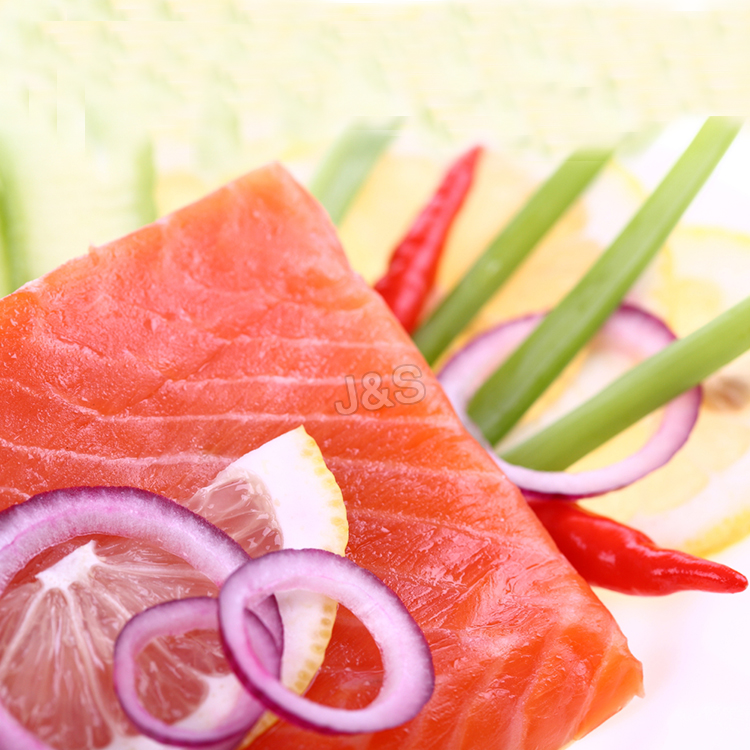Professional Design Astaxanthin Manufacturer in European
Professional Design Astaxanthin Manufacturer in European Detail:
[Latin Name] Haematococcus Pluvialis
[Plant Source] from China
[Specifications]1% 2% 3% 5%
[Appearance] Dark red Powder
[Particle size] 80 Mesh
[Loss on drying] ≤5.0%
[Heavy Metal] ≤10PPM
[Storage] Store in cool & dry area, keep away from the direct light and heat.
[Shelf life] 24 Months
[Package] Packed in paper-drums and two plastic-bags inside.
[Net weight] 25kgs/drum
Brief Introduction
Astaxanthin is a natural nutritional component, it can be found as a food supplement. The supplement is intended for human, animal, and aquaculture consumption.
Astaxanthin is a carotenoid. It belongs to a larger class of phytochemicals known as terpenes, which are built from five carbon precursors; isopentenyl diphosphate and dimethylallyl diphosphate . Astaxanthin is classified as a xanthophyll (originally derived from a word meaning “yellow leaves” since yellow plant leaf pigments were the first recognized of the xanthophyll family of carotenoids), but currently employed to describe carotenoid compounds that have oxygen-containing moities, hydroxyl or ketone , such as zeaxanthin and canthaxanthin. Indeed, astaxanthin is a metabolite of zeaxanthin and/or canthaxanthin, containing both hydroxyl and ketone functional groups. Like many carotenoids, astaxanthin is a colorful, lipid-soluble pigment. This colour is due to the extended chain of conjugated (alternating double and single) double bonds at the centre of the compound. This chain of conjugated double bonds is also responsible for the antioxidant function of astaxanthin (as well as other carotenoids) as it results in a region of decentralized electrons that can be donated to reduce a reactive oxidizing molecule.
Function:
1.Astaxanthin is a powerful antioxidant and may protect against oxidative damage to body tissues.
2.Astaxanthin can improve the immune response by increasing the number of antibody producing cells.
3.Astaxanthin is a potential candidate to treat neurodegenerative disease such as Alzhimer and Parkinson diease.
4.Astaxanthin dan reduce UVA-light damage to skin such as sunburn, inflammation, ageing and skin cancer.
Application
1.When applied in pharmaceutical field, astaxanthin powder has the good function of antineoplastic;
2.When applied in health food field, astaxanthin powder is used as food additives for pigment and health care;
3.When applied in cosmetic field, astaxanthin powder has the good function of antioxidant and anti-aging;
4.When applied in animal feeds field, astaxanthin powder is used as animal feed additive to impart coloration, including farm-raised salmon and egg yolks.
Product detail pictures:

Related Product Guide:
The corporation keeps to the operation concept "scientific management, superior quality and performance primacy, consumer supreme for Professional Design Astaxanthin Manufacturer in European , The product will supply to all over the world, such as: Dominica, France, Tunisia, We welcome you to visit our company and factory. It is also convenient to visit our website. Our sales team will offer you the best service. If you need more information, please feel free to contact us by E-mail or telephone. We are sincerely hope to establish a good long-term business relationship with you through this opportunity, based on equal, mutual benefit from now till the future.
Royale Fitshape with L- Carnitine plus Green Tea Extract
L- Carnitine Health Benefits:
• L- Carnitine gives an energy boost, which converts body fat to fuel and elevates certain enzymes needed to metabolizes sugars, starches, and other carbohydrate. Athletes and casual exercises can benefit from L- Carnitine supplementation because it reduce the accumulation of lactic acid which is responsible for the burn felt inside the muscles. This may enable exercisers to gain without the pain, as one study confirmed.
• L- Carnitine is also useful in cleansing the bloodstream of ammonia and in creating glycogen used to store essential glucose.
• L- Carnitine has been used in connection with angina, attention deficit-hyperactivity disorder, congestive heart failure, heart attacks, and intermittent claudication.
• L- Carnitine can help prevent muscle atrophy. Anyone suffering from a servere degenerative disease such as cancer or AIDS, may benefit from L- Carnitine supplementation.
• Cardiomyopathy, a disease of the heart muscle, becomes a distinct possibility for those suffering from carnitine deficiency. This amino acid protects the heart from damage when a heart attack or a spasm cuts off the oxygen supply.
• Low thyroid function may indicate a need for carnitine to help overcome low energy levels and the tendency to gain weight.
• Kidney dialysis rinses away amino acids, causing weak, tired condition, which is threatened by high triglycerides. L- Carnitine supplements may be advisable in such situations.
Green Tea Extract
Green tea extract is Bioflavonoid rich and one of its main uses is fighting free radicals in your body. It contains high level of Polyphenols (a Bioflavonoid) and is also a rich source of EGCG (an anti0xidant), that’s over 200 times more potent than vitamin E in fighting free radicals and pro-oxidants.It is the second most popular beverage in the world. Green tea is said to have many health benefits, including lowering cholesterol, boosting immune system and helping to prevent cavities and tooth decay.
DIRECTIONS:
Take 1-2 capsules daily or as prescribed by your physician.
For best results, have a regular exercise and maintain a good diet.
150 mg/capsule
50 capsules/bottle
For ORDERS and INQUIRIES, contact:
+63.927.749.0197 (Globe)
+63.919.823.1469 (Smart)
+63.932.877.6646 (Sun)
EMAIL US: realizeandroyalize@gmail.com
LIKE US: facebook.com/realizeandroyalize
FOLLOW US: twitter.com/realizeroyalize
HOW TO JOIN and EARN:
https://www.facebook.com/notes/kristoffer-bellodo/realize-and-royalize/10203028761703059
I’ve tasted more than my share of regular (sugar) white chocolate so I know what flavor I am shooting for. I am also hyper critical of self so I really need to know what other people think. An in this case I need to talk it with a grain of salt.
The factory workers have a good team spirit, so we received high quality products fast, in addition, the price is also appropriate, this is a very good and reliable Chinese manufacturers.






